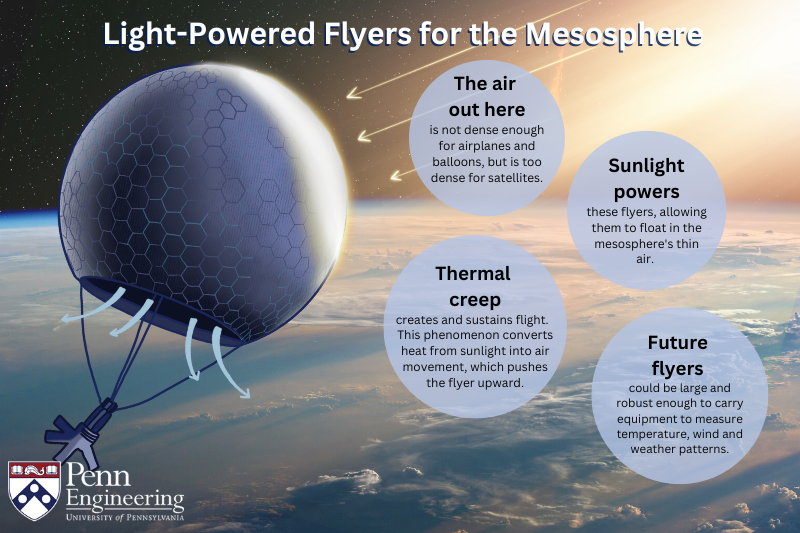
The mesosphere — the middle of Earth’s five atmospheric layers — is almost unexplorable. The air is ill-disposed for tools of observation: not dense enough to hold airplanes or balloons aloft but too dense to support a satellite. Rockets can move through it, but only for a few minutes at a time. Winds can reach up to 200 miles per hour and temperatures as low as minus 130 F. Thick with iron and sodium from millions of daily meteors that burn up into shooting stars, the mesosphere shields us from space debris. It contains almost no water vapor yet is host to enigmatic clouds. Eerie lightning dances through it in colored streaks and clusters.
Sandwiched between our skies and space beyond, the mesosphere’s mysteries hold information that scientists are eager to access. But to index climate, explore weather, or learn about the universe, they will need technology suited to this awkward middle zone, devices with the potential to withstand harsh conditions and thrive in unique environs.
Igor Bargatin, Associate Professor in the Department of Mechanical Engineering and Applied Mechanics at the University of Pennsylvania School of Engineering and Applied Science, is solving the mesosphere’s air problem using light, with the help of nineteenth-century science.
His lab is renowned for its work on photophoretic flight, or light-powered levitation. Since the 1870s, scientists have been fabricating devices that move tiny particles using the power of light alone. But Bargatin’s team has cracked a century-long scientific barrier by using light to levitate materials much larger than microscopic particles. These devices channel sunlight into heat to create a cushion of air that allows a device to hover — a phenomenon known as “thermal creep” — as well as carry tools for scientific measurements.
“Using light,” says Bargatin, “these devices stand a chance in the mesosphere. Our vehicles are a few inches in size now and getting bigger and bigger. For the future, we envision a device, 100 feet long, anchored to sensing and measurement equipment and powered by the sun. The little we know now about this layer of the atmosphere has been gathered from passing rockets and distant observations from satellites. But we aim to send instruments tailored for this difficult environment straight to the source and stay there for hours or days.”
Igor Bargatin’s work on photophoretic propulsion to explore the mesosphere is supported by a 2023 grant from the NASA Innovative Advanced Concepts (NIAC) Program. “NIAC projects study innovative, technically credible, advanced concepts that could one day ‘Change the Possible’ in aerospace.”
